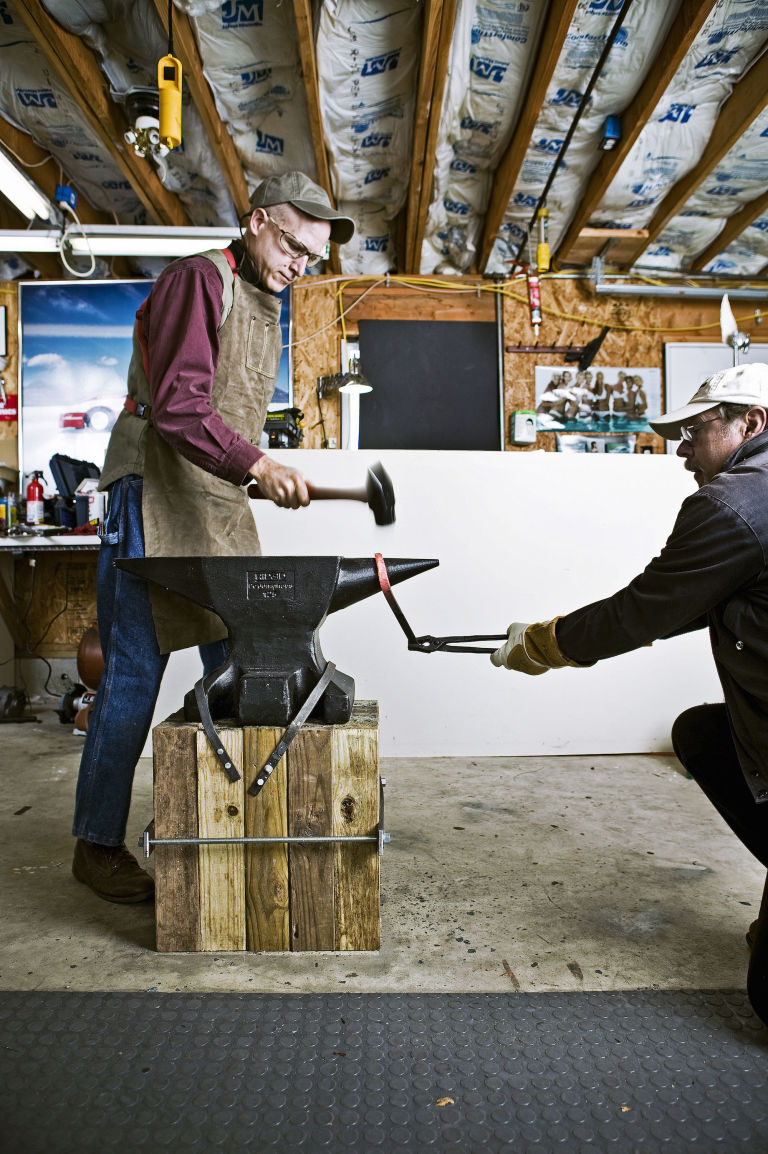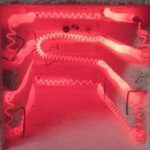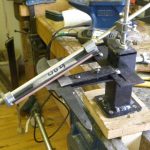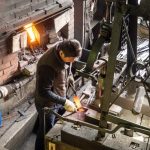
If you wish to deal with metal, there’s something you need to challenge: You require heat. With it, you can make the hardest metal send to your will. Without it, you’ll never ever get complete proficiency over this persistent product.
Constructing the Forge
Possibly it’s due to the fact that our smokestack markets remain in a decrease that an increasing variety of Americans feel the requirement to get their metalworking repair in house workshops. The Artist-Blacksmith’s Association of North America counts a subscription of 4000 enthusiasts and specialists. Some individuals approximate there are more blacksmiths in this nation today than there were throughout the 1800s. And you do not need to poke around long to discover lots of Web websites using friendly– even enthusiastic– suggestions from craftsmen, in addition to devices varying from anvils and tongs to air-driven power hammers.
I thought about purchasing a gas-powered design, however, the reality was that I wished to develop my own. So I chose a style that can be performed in an afternoon utilizing parts acquired at a house center, a masonry supply lawn, and a car parts shop. The create would burn coal, instead of gas, to make things easier. And the style had another virtue, a minimum of as far as I was worried. It was based upon strategies released in Popular Mechanics in July 1941.
I employed the aid of Mike Allen, our senior vehicle editor, and a fracture metalworker. He glanced at the old strategies and stated, “Sure, we can develop this.” Within days, Mike’s home and the store behind it swirled with activity as the UPS person provided in quick succession a 275-pound anvil, tools, products, and 4 50-pound boxes of blacksmith’s coal delivered from Pennsylvania.
When the products remained in, we set to work developing the create, starting with its stand. I cut steel parts and handed them off to Mike, who laid them out on the store flooring, secured them together, and briefly tack-welded them with little globs of steel.
With the stand added, he turned up his mask and handed me the welding weapon: “You take it from here.” I moved on a mask and got where he’d ended. As I worked, Mike bent over my shoulder and fired off little bits of suggestions. “Get more weld metal on the vertical surface areas,” he stated. “You’re getting excessive spatter; lower your travel speed and your electrode stick-out.” When I discovered it tough to translucent the welding glare and smoke, he stated, “Deal with it. Take a look at the weld puddle, not the arc.” I found out more about welding because half an hour than I had in years of messing around on my own.
After we finished the stand, we riveted sheet metal into a hood and made a chimney from a 5-ft piece of stovepipe. Then, we shoveled refractory cement (the kind utilized in heaters and kilns) into the sink. We ran the steel and PVC pipeline from the drain to the output port on a store vacuum. The very same line would provide air both to the sink (to feed the fire) and, through a Y joint, to another pipeline leading into the chimney (to assist pull the smoke up and away). We set up a valve to let us direct the air where we desired it. We likewise cut pressure-treated 4 x 4 lumber to make a block for the anvil, then raised the anvil onto the block utilizing a tow strap hooked to a ceiling-mounted electrical winch. Lastly, we hammered 1/8-in.-thick steel flat stock into straps to connect the anvil to its block. Think me, 15 minutes invested in pounding cold steel can persuade any person of the requirement for a forge.


